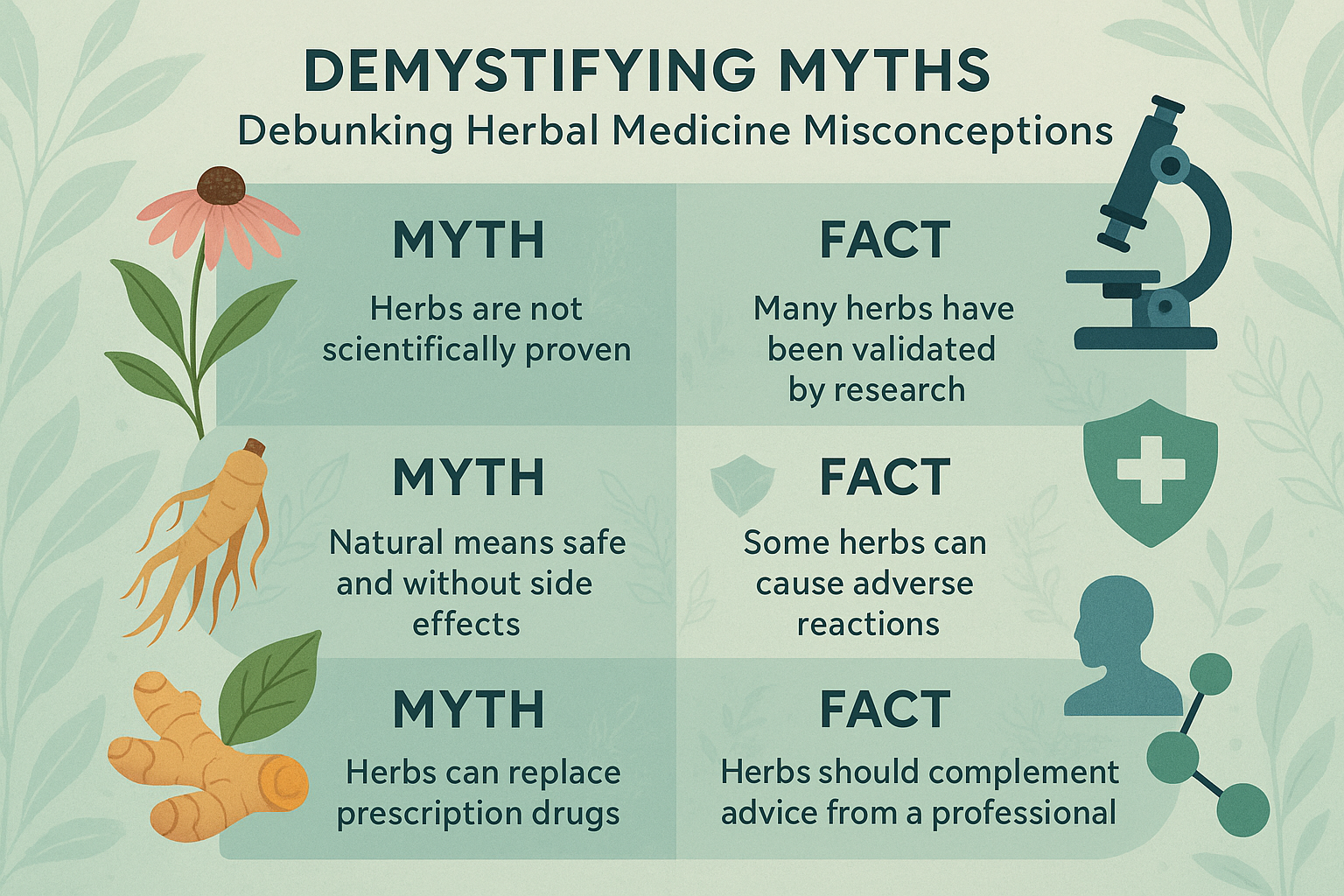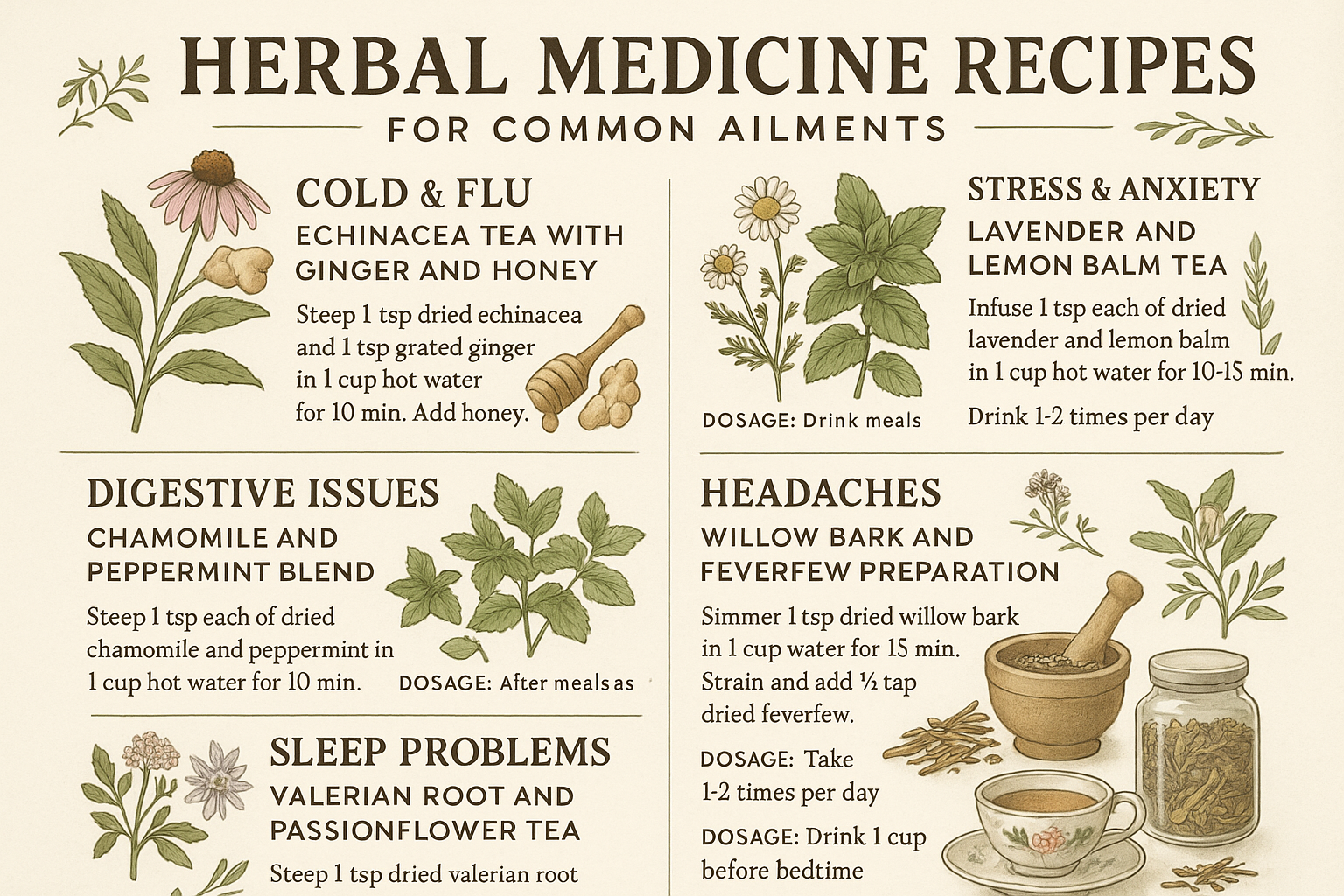Medicinal plants have a profound global impact, playing an essential role in human health and well-being. These plants are integral to traditional medicine and modern pharmacological sciences, offering treatments for numerous ailments. Their significance extends beyond healthcare, influencing biodiversity and ecological balance.
Why should we care about preserving medicinal plants? The answer lies in their irreplaceable value. Medicinal plants are not only vital for healthcare but also for the discovery of new treatments and drugs. Preserving them ensures that we maintain access to these natural remedies, which are often more sustainable and accessible than synthetic alternatives.
This article explores the various ways in which factors like biodiversity loss, climate change, and deforestation are threatening medicinal plants on a global scale. It proposes solutions to protect these valuable resources for future generations. Through understanding these challenges and implementing sustainable practices, we can safeguard the rich legacy of medicinal plants for continued human health benefits.
1. Biodiversity Loss and Its Effects on Medicinal Plants
Biodiversity loss poses a significant threat to the availability of medicinal plants. The decrease in plant variety directly affects both traditional healers and modern medicine, making it harder to find important medicinal species.
1.1 Impact of Biodiversity Loss on Medicinal Plants' Availability
Challenges for Traditional Healers
Traditional healers depend on a wide range of plant species to treat different illnesses. With the decrease in biodiversity:
- Many traditional remedies use specific plants that may no longer be accessible due to habitat destruction or climate change.
- The disappearance of certain species leads to the loss of indigenous knowledge about their use, as younger generations lose access to these resources.
For instance, in African communities, the use of local plant species for healing purposes is deeply ingrained in cultural traditions. The loss of these plants disrupts traditional healing systems and puts valuable ethnobotanical knowledge at risk.
Implications for Modern Medicine
Modern medicine also faces challenges due to biodiversity loss:
- Many pharmaceutical compounds are derived from plants. The decrease in plant variety limits the potential discovery of new drugs.
- Pharmaceutical industries that rely on plants harvested from the wild face supply chain vulnerabilities when important species become scarce or extinct.
The rosy periwinkle (Catharanthus roseus), a plant native to Madagascar, serves as a clear example. It contains alkaloids used in chemotherapy drugs for treating leukemia and Hodgkin's lymphoma. Biodiversity loss in its natural habitat endangers the availability of these crucial compounds.
Ecological Impact
The decline in plant variety affects entire ecosystems:
- Many medicinal plants depend on specific pollinators, which are also impacted by biodiversity loss. This creates a harmful cycle, where the decline of one species affects another.
- Diverse plant species contribute to soil health and nutrient cycling. The loss of plant variety can lead to soil degradation, further reducing the potential for medicinal plants to grow.
Efforts to conserve biodiversity should prioritize the protection of entire ecosystems, not just individual species. This is crucial in maintaining the delicate ecological balance necessary for medicinal plant growth.
1.2 Case Study: Vulnerability of Medicinal Plants to Climate Change in [Region]
Climate change worsens the effects of biodiversity loss by changing the distribution and abundance of medicinal plants. In regions that heavily rely on these plants, climate change poses a serious threat.
Let's take [Region] as an example:
- Changes in temperature and rainfall patterns force many medicinal plants to move to new areas, often encountering unsuitable growing conditions.
- Altered flowering and fruiting times disrupt traditional harvesting schedules, affecting both availability and potency.
In [Region], where communities extensively depend on wild-harvested medicinal plants for healthcare, climate-induced changes have led to a noticeable decrease in important species like [specific plant]. This has compelled local healers to either adjust their practices or seek alternative treatments, usually with limited success.
By understanding how biodiversity loss affects the availability and effectiveness of medicinal plants, we can better grasp the urgent need for conservation efforts aimed at safeguarding these priceless resources.
1.2 Case Study: Vulnerability of Medicinal Plants to Climate Change in the Himalayas
The Himalayas, a region known for its rich biodiversity, provides a compelling case study on how climate change affects medicinal plants. This area is home to numerous plant species that are crucial for traditional medicine and modern pharmacology. Biodiversity loss in this region directly impacts the availability of these medicinal plants, posing significant challenges.
Impact of Climate Change on Medicinal Plants in the Himalayas
Climate change disrupts the natural distribution patterns of medicinal plants in the Himalayas. Rising temperatures, changing precipitation patterns, and more frequent extreme weather events alter habitats, making it difficult for many plant species to survive and thrive. This leads to:
- Shift in Altitudinal Range: Many plant species are forced to migrate to higher altitudes where conditions are more favorable. However, this shift is not always possible due to physical barriers or lack of suitable habitats.
- Phenological Changes: Alterations in flowering and fruiting times affect the reproductive success of medicinal plants, reducing their abundance.
- Increased Vulnerability: Plants already stressed by climate change become more susceptible to diseases and pests.
Examples of Affected Species
Several key medicinal plants in the Himalayas have shown vulnerability due to climate change:
- Nardostachys jatamansi (Spikenard): Traditionally used for treating insomnia and anxiety, this plant is now harder to find as it shifts to higher altitudes.
- Rheum emodi (Himalayan Rhubarb): Known for its laxative properties, its population is declining due to habitat loss.
- Picrorhiza kurroa (Kutki): Used in liver treatments, this plant faces reduced availability as its habitat becomes increasingly fragmented.
Local Impacts
For communities that heavily rely on these plants for healthcare needs and livelihoods, the scarcity presents substantial challenges:
- Traditional Healers: Reduced access to essential medicinal plants hampers their ability to provide effective treatments.
- Economic Hardship: The decline in availability affects income derived from gathering and selling these plants.
The link between biodiversity loss and climate change underlines the urgency for conservation efforts tailored to preserving these vital resources. Addressing these issues requires a multi-faceted approach involving local communities, policy-makers, and scientific research.
2. Traditional Medicine and the Role of Medicinal Plants
The Connection Between Traditional Healing Systems and Medicinal Plants
Traditional medicine has been an essential part of human healthcare for centuries. These healing systems are closely linked to the use of medicinal plants for treatments, providing valuable knowledge that modern medicine often relies on. In many cultures, local plant species with healing properties have been used by traditional healers to treat various ailments, from common colds to more serious conditions.
Herbal medicine is at the core of these practices, offering treatments that are accessible and affordable. It forms the backbone of traditional medicine, providing accessible and affordable treatment options.
Many modern pharmaceuticals are actually derived from compounds found in medicinal plants that were initially used in traditional medicine.
For instance, the bark of the willow tree has been used for pain relief and fever reduction for thousands of years. This eventually led to the development of aspirin, which is now one of the most widely used medications worldwide.
The Abundance of Medicinal Plants in Africa
African communities hold a wealth of knowledge when it comes to medicinal plants. The continent's diverse ecosystems are home to a wide range of plant species, each with its own unique healing properties. In areas like West Africa, traditional healers have developed effective methods to harness these properties.
It is crucial to protect both the plant species and the indigenous knowledge associated with them through culturally sensitive conservation efforts.
Collaborative projects involving local communities can promote sustainable use while ensuring fair distribution of benefits.
Research Discoveries from Ghana
Research conducted in Ghana on local herbal remedies has led to significant findings:
The identification of plants with potential antimalarial properties highlights the importance of combining indigenous knowledge with scientific research to uncover new treatments.
2.1 Preserving Traditional Medicine Practices Through Sustainable Use of Medicinal Plants
Ensuring a long-term supply of medicinal plants is crucial for maintaining traditional medicine practices. Sustainable harvesting and cultivation methods play a vital role in this effort.
Sustainable Harvesting
Collecting plant materials in ways that do not harm their populations or ecosystems is known as sustainable harvesting. Techniques such as rotational harvesting, where different sections are harvested at different times, allow plants to regenerate.
Cultivation
Growing medicinal plants can reduce pressure on wild populations and provide a controlled environment for quality assurance. Some examples include:
- Aloe vera, widely used for its skin-soothing properties, is now commercially cultivated worldwide.
- Artemisia annua, known for its antimalarial compound artemisinin, is extensively grown in China and Vietnam to meet global demand.
By adopting these practices, traditional healers can continue to rely on medicinal plants without depleting natural resources.
The Significance of Education and Training
Education and training programs targeted at traditional healers can further support sustainable practices:
- Teaching them how to identify endangered species and explore alternative sourcing options.
- Conducting workshops on cultivation techniques tailored to local environments.
These initiatives not only preserve crucial plant species but also empower local communities by enhancing their knowledge base.
Collaboration Among Different Groups
Effective preservation requires collaboration among various stakeholders:
- Local communities: They are central to conservation efforts due to their extensive knowledge and direct reliance on medicinal plants.
- Governments: Their role is crucial in implementing policies that support sustainable practices and protect native plant species.
- Scientific institutions: They play an essential role in researching sustainable methods and scientifically validating traditional uses.
The integration of these efforts ensures that medicinal plants remain a viable resource for future generations while preserving cultural heritage linked to traditional medicine practices.
3. Deforestation as a Major Threat to Medicinal Plants
Critical Role of Forests in Supporting Medicinal Plant Communities
Forests play a critical role in supporting the growth and abundance of medicinal plants. These diverse ecosystems provide optimal conditions for various species to thrive. Here's why forests are so vital:
- Microhabitats: Forests create specialized microhabitats that cater to the specific needs of different types of plants.
- Nutrient Cycles: The nutrient cycles within forest ecosystems foster the robust growth and vitality of medicinal plants.
- Pollination and Seed Dispersal: Forests are home to a myriad of animals, including bees and birds, which aid in pollination and seed dispersal, ensuring the continuation of these plant communities.
Impact of Deforestation on Medicinal Plant Trade
Regrettably, deforestation poses a significant threat to these invaluable plant communities. It not only devastates their natural habitats but also has far-reaching consequences on local and global trade.
Here are some of the main repercussions of deforestation for medicinal plants:
- Reduced Availability: Clearing forests leads to the disappearance of medicinal plants that rely on these habitats for survival.
- Economic Impacts: Communities dependent on trading these plants suffer severe financial setbacks when their primary source of income is lost.
- Unsustainable Exploitation: The scarcity caused by deforestation often drives overharvesting, pushing certain plant species towards extinction.
3.1 Case Study: Deforestation's Toll on Medicinal Plants in the Amazon Rainforest
The Amazon Rainforest, renowned for its extraordinary biodiversity and wealth of medicinal plants, currently faces an alarming threat due to rampant deforestation.
Alarming Rate of Deforestation
The Amazon rainforest is rapidly disappearing primarily due to logging, agriculture, road construction, and urban development.
- Statistics: Reports indicate that approximately 17% of the Amazon rainforest has been lost in the past 50 years.
- Drivers: The main causes of deforestation in the Amazon include clearing land for cattle ranching, soybean cultivation, and illegal logging activities.
Consequences for Indigenous Tribes
Indigenous tribes residing in the Amazon heavily rely on medicinal plants for their healthcare needs. Consequently, the destruction of their habitat directly impairs their ability to access these vital resources.
- Healthcare Dependency: These tribes have long utilized plants from their surroundings to treat various illnesses, with generations of knowledge passed down.
- Cultural Erosion: Losing access to these plants not only leads to health problems but also erodes their cultural practices and traditional wisdom.
Specific Examples
Several specific medicinal plants in the Amazon rainforest face significant threats:
- Cat’s Claw (Uncaria tomentosa): This plant, valued for its anti-inflammatory properties, is increasingly endangered due to deforestation.
- Ayahuasca (Banisteriopsis caapi): An important plant used in traditional healing ceremonies, its availability is severely limited by deforestation.
Protecting the remaining forested areas in the Amazon and other regions is crucial. It is imperative that we prioritize sustainable practices and conservation efforts to ensure the preservation of these invaluable resources for future generations.
Sources:
- Mongabay - Rainforests
- [Green Earth - Deforestation in the Amazon Rainforest](https://www.green.earth/blog/deforestation-in
4. Protecting and Conserving Medicinal Plant Resources
Collaborative Efforts for Safeguarding Diversity
Protecting plant resources requires a multifaceted approach that brings together local communities, governments, and scientific institutions. These stakeholders must work collaboratively to safeguard medicinal plant diversity, which is crucial for both traditional healing practices and modern medicine. Governments can implement policies that promote sustainable harvesting practices, while scientists can provide the necessary research to support these efforts.
Equitable Access to Botanical Gardens and Protected Areas
Ensuring community access to botanical gardens and protected areas is essential for the sustainable management of medicinal plants. Botanical gardens serve as living repositories of plant diversity, where medicinal species can be studied and conserved. Protected areas offer natural habitats where these plants can thrive without the pressures of overharvesting or habitat destruction.
- Botanical Gardens: Institutions like the Royal Botanic Gardens in Kew and New York Botanical Garden play pivotal roles in conserving medicinal plants.
- Protected Areas: National parks and wildlife reserves often encompass diverse ecosystems that include valuable medicinal plant species.
Ethical Compensation for Traditional Knowledge
The ethical dimension of compensating indigenous and local knowledge holders cannot be overlooked. Many medicinal plants have been discovered through the traditional knowledge of indigenous peoples, who have used these plants for generations. Fair compensation ensures that these communities benefit from their contributions to medicinal plant discovery and conservation.
"It is not only a matter of ethics but also a practical necessity to recognize and reward the invaluable contributions of indigenous knowledge holders."
Engaging Indigenous Communities in Medicinal Plant Conservation Projects
Empowering indigenous communities is critical for the success of conservation initiatives. Indigenous peoples possess deep-rooted knowledge about local ecosystems and the medicinal properties of native plants. Showcasing successful initiatives highlights the potential benefits of involving these communities in conservation projects.
Successful Initiatives:
- The Maya Nut Institute: This organization works with indigenous women in Central America to conserve the Maya Nut tree, which has numerous medicinal uses.
- The Honey Bee Network: In India, this network collaborates with tribal communities to document and protect traditional plant-based remedies.
These initiatives demonstrate that engaging indigenous communities leads to more effective conservation outcomes and supports the preservation of traditional healing heritage.
Importance of Collaboration between Indigenous Peoples and Scientists
Collaboration between indigenous peoples and scientists is essential for effective medicinal plant conservation. A recent study published in Sustainability emphasizes the need for such partnerships, highlighting the value of incorporating traditional knowledge into scientific research and conservation efforts. Similarly, an article in the Journal of Ecology stresses the importance of recognizing indigenous perspectives on biodiversity management. By bridging these two realms, we can achieve more holistic and sustainable approaches towards protecting our invaluable medicinal plant resources.
5. Integrating Conservation and Sustainable Use of Medicinal Plants
Integrating conservation goals with the sustainable commercialization of medicinal plants is vital. This approach not only supports biodiversity but also promotes local economic development. By ensuring that we harvest and grow medicinal plants responsibly, we can:
- Prevent deforestation
- Protect these valuable resources for future generations
5.1 Certification Schemes for Ethical Sourcing of Medicinal Plants
Certification programs play a crucial role in promoting the ethical sourcing of medicinal plants. These schemes help consumers make informed choices about sustainably harvested or cultivated products, ensuring that their purchasing decisions support environmental conservation and societal well-being.
Types of Certification Programs
There are several types of certification programs available for medicinal plants:
- FairWild Certification: This program sets standards for the sustainable collection and trade of wild-harvested plants. It focuses on preventing overharvesting and ensuring fair compensation for local harvesters.
- Organic Certification: While primarily associated with food products, organic certification also applies to medicinal plants. It ensures no harmful chemicals are used in cultivation, promoting soil health and biodiversity.
- Forest Stewardship Council (FSC) Certification: FSC certifies forests managed sustainably. Products derived from FSC-certified forests guarantee responsible forest management practices, which include the ethical sourcing of medicinal plants.
Benefits of Ethical Sourcing Certifications
Ethical sourcing through certification schemes offers multiple benefits:
- Environmental Protection: Certified products contribute to conservation efforts by adhering to sustainable harvesting practices.
- Economic Development: Local communities benefit financially through fair trade practices, which can improve their livelihoods.
- Consumer Awareness: Certifications provide transparency, allowing consumers to support sustainable practices actively.
Ethical sourcing certifications are not just labels; they represent a commitment to safeguarding biodiversity and supporting indigenous knowledge systems. They ensure that the commercialization of medicinal plants does not come at the expense of environmental degradation or social injustice.
Supporting Local Livelihoods
Sustainable use of medicinal plants involves more than just conservation; it also encompasses economic sustainability for local communities:
- Community-Based Enterprises: Encouraging local communities to form cooperatives or small businesses around the sustainable harvest and sale of medicinal plants can create steady income sources.
- Education and Training Programs: Providing education on sustainable harvesting techniques and business skills empowers local communities to manage their resources effectively.
- Market Access: Facilitating access to markets ensures that sustainably sourced medicinal plant products reach consumers willing to pay a premium for ethically sourced goods.
Supporting local livelihoods through sustainable practices creates a win-win situation where both people and nature thrive.
Long-Term Survival Strategies
For the long-term survival of medicinal plants, integrated conservation strategies are essential:
- Protected Areas: Establishing botanical gardens, protected reserves, and community-managed forests can safeguard critical habitats for medicinal plants.
- Research Partnerships: Collaborations between scientific institutions, governments, and local communities can lead to better understanding and preservation techniques for endangered species.
- Policy Advocacy: Advocating for policies that promote sustainable use and prevent deforestation is crucial. Strong legal frameworks can enforce regulations that protect medicinal plant resources effectively.
By integrating conservation with sustainable use, we can address both environmental concerns and socio-economic needs, creating a balanced approach to preserving medicinal plant diversity.
Preventing Deforestation
Deforestation remains one of the most significant threats to medicinal plant populations:
- Agroforestry Practices: Implementing agroforestry systems can reduce deforestation by combining agricultural crops with tree cultivation, promoting biodiversity while providing economic benefits.
- Alternative Livelihoods: Developing alternative livelihood options such as eco-tourism or non-timber forest products can reduce pressure on forests traditionally used for timber extraction.
Preventing deforestation requires a multifaceted strategy involving policy changes, community engagement, and innovative land-use practices.
The integration of conservation goals with sustainable commercialization is an ongoing process requiring continuous effort from all stakeholders involved. Engaging indigenous communities in these efforts ensures cultural relevance and effectiveness in preserving our natural heritage.
The Future of Medicinal Plants and Our Role in Preserving Their Global Impact
To understand how medicinal plants affect human health worldwide, we need a comprehensive plan. This plan must tackle the main reasons why biodiversity is decreasing while promoting other ways of staying healthy that don't rely as much on wild plants.
Dealing with Biodiversity Loss
- Conservation Efforts: Create more protected areas and botanical gardens where medicinal plants can grow well.
- Sustainable Harvesting: Follow guidelines for responsible gathering to avoid taking too much.
- Research and Development: Put money into scientific studies to find new healing properties and develop sustainable ways of growing these plants.
Promoting Other Ways to Stay Healthy
- Community Education: Teach people in local areas about how important medicinal plants are and how to use them without harming the environment.
- Combining Traditional and Modern Medicine: Get traditional healers and doctors to work together so that they can provide the best care for patients.
- Growing Programs: Support projects that encourage people to grow their own medicinal plants at home or in community gardens.
Working Together Worldwide
Saving medicinal plants means everyone needs to pitch in:
- Local Communities: Involve indigenous groups who know a lot about using these plants for medicine.
- Governments: Make sure there are strict rules in place to protect natural areas from being destroyed and taken over by industries.
- Scientific Institutions: Do thorough research to find out exactly what conditions these plants need to survive and come up with plans to keep them safe.
Medicinal plants are extremely important for our health. By using many different methods, we can stop biodiversity from getting worse, make sure we use these plants wisely, and keep them around for a long time.
Conclusion
Medicinal plants play a crucial role in maintaining global health. They provide essential remedies that have been used for centuries, connecting traditional healing methods with modern medicine. Their importance cannot be overstated as they contribute significantly to biodiversity and offer countless benefits for biological, health, and pharmacological sciences.
The global impact of medicinal plants highlights the responsibility we all have in preserving these unique natural treasures. Biodiversity loss not only endangers the availability of these plants but also hinders the potential discovery of new treatments for various diseases.
Call to Action
Here are some ways you can contribute to the conservation of medicinal plants:
- Support local and international initiatives: Get involved with organizations that are committed to sustainably managing medicinal plant resources.
- Advocacy: Spread awareness about the importance of medicinal plants and how biodiversity loss affects their availability.
- Donations: Contribute financially to conservation projects that aim to protect habitats where medicinal plants grow.
- Personal lifestyle choices: Choose medicinal products that are sourced sustainably and support practices that are kind to the environment.
By safeguarding these precious resources, we ensure that future generations can benefit from the healing properties of medicinal plants, thus upholding global health and well-being.
FAQs (Frequently Asked Questions)
Why should we care about preserving medicinal plants?
Preserving medicinal plants is crucial for maintaining global health and well-being. These plants play a significant role in traditional healing systems around the world and are also a vital source of ingredients for modern medicine. By protecting medicinal plants, we ensure that future generations have access to these valuable resources for their healthcare needs.
How does biodiversity loss affect the availability of medicinal plants?
Biodiversity loss directly impacts the availability of key medicinal plant species. As plant diversity declines, it becomes increasingly challenging to find and utilize these important species for traditional healing practices and modern medicine. This poses a threat to human health and well-being, making it essential to address the root causes of biodiversity loss to protect medicinal plants.
What is the link between climate change and the vulnerability of medicinal plant species?
Climate change disrupts the natural distribution patterns of medicinal plant species, making them harder to find and study. This has a direct impact on their availability and abundance, posing significant challenges for communities that rely on these plants for their healthcare needs. Addressing climate change is therefore crucial for protecting medicinal plant resources.
Why is preserving traditional medicine practices through sustainable use of medicinal plants important?
Preserving traditional medicine practices through sustainable use of medicinal plants is essential for ensuring a long-term supply of these resources. By implementing sustainable harvesting and cultivation methods, we can support traditional healers in their use of medicinal plants while also safeguarding these valuable species for future generations.
How does deforestation impact the availability of medicinal plants in the Amazon Rainforest?
Deforestation in the Amazon Rainforest jeopardizes the availability of medicinal plants by destroying the diverse ecosystems that support these valuable resources. This has a direct impact on indigenous tribes who rely on these plants for their healthcare needs, highlighting the urgent need to address deforestation to protect medicinal plant diversity.
How can certification schemes help in promoting ethical sourcing of medicinal plants?
Certification schemes can help consumers make informed choices about sustainably harvested or cultivated medicinal plant products. By providing clear guidelines and standards for ethical sourcing, certification programs support the sustainable commercialization of medicinal plants while ensuring their long-term survival.







Leave a comment
This site is protected by hCaptcha and the hCaptcha Privacy Policy and Terms of Service apply.